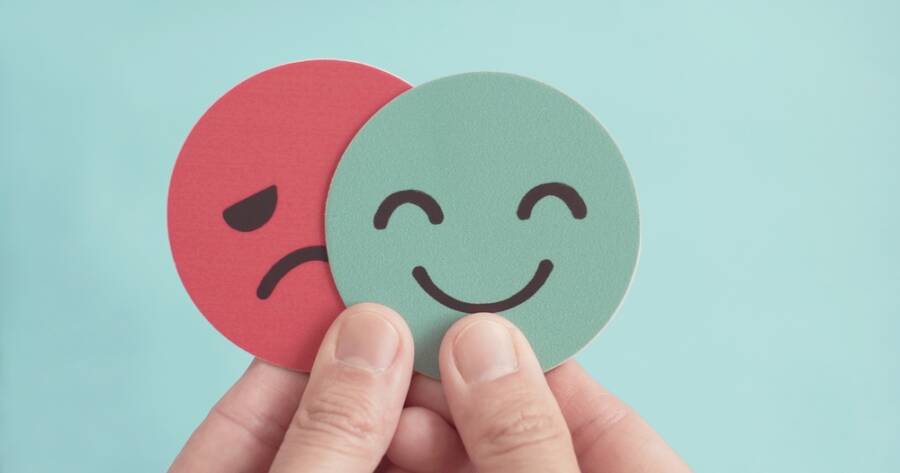Bipolar 1 and 2 are similar yet distinct. Uncover the subtle differences and empower yourself with knowledge.
Understanding the nuances between the two is key to recognizing and managing these conditions effectively. Delving deeper is a proactive approach to mental health.
Understanding Your Mind: Bipolar 1 vs. Bipolar 2
Bipolar disorder, a mental health condition characterized by extreme mood swings, is divided into two main types — Bipolar 1 and Bipolar 2.1 While both share common symptoms, they are distinguished by the severity and duration of these mood episodes. Bipolar 1 is characterized by manic episodes that last at least seven days or manic symptoms that are so severe that immediate hospital care is needed.2 On the other hand, Bipolar 2 is defined by a pattern of depressive episodes and hypomanic episodes, but not the full-blown manic episodes that are typical of Bipolar 1.
Recognizing the Signs and Symptoms of Bipolar Disorders
Early recognition of the signs and symptoms of Bipolar 1 and Bipolar 2 can significantly impact the management and treatment of these conditions.3 In Bipolar 1, the early signs often involve drastic changes in mood and behavior, such as increased energy, reduced need for sleep, and heightened irritability. In contrast, Bipolar 2 typically presents initially with symptoms of depression, including persistent sadness, loss of interest in enjoyable activities, fatigue, and changes in appetite and sleep patterns. Online research can help you understand the signs and symptoms more thoroughly.
Demystifying Bipolar: Identifying the Key Differences
The key differences between Bipolar 1 and Bipolar 2 lie in the intensity and duration of manic and depressive episodes. In Bipolar 1, manic episodes are more severe and can last longer. These episodes can be so intense that they interfere with daily activities and may require hospitalization. In contrast, Bipolar 2 involves periods of depression interspersed with hypomania, a milder form of mania. These episodes are usually less severe and shorter in duration than those experienced in Bipolar 1.
Treatment Approaches for Bipolar 1 and 2
Treatment for Bipolar 1 and Bipolar 2 typically involves a combination of medication and psychotherapy.4 For Bipolar 1, mood stabilizers and antipsychotic medications are commonly prescribed to control manic episodes. For Bipolar 2, the treatment often focuses on stabilizing mood swings and treating depressive episodes, with a preference for mood stabilizers and antidepressants. Psychotherapy, such as cognitive-behavioral therapy (CBT) or family-focused therapy, plays a crucial role in both conditions.
The Role of Support Systems in Managing Bipolar Disorders
Support systems play a pivotal role in managing Bipolar disorders. This includes family, friends, healthcare providers, and support groups. Having a strong support network can provide emotional comfort, practical assistance, and a sense of belonging. It can also help in monitoring symptoms and ensuring adherence to treatment plans. Family and friends can benefit from education about these conditions, enabling them to offer more effective support and understanding.
Breaking the Stigma of Bipolar Disorders
Educating society about Bipolar 1 and Bipolar 2 is crucial in breaking the stigma surrounding these conditions. Awareness campaigns, mental health education in schools and workplaces, and open conversations can help demystify these disorders. Highlighting the experiences of individuals living with Bipolar disorders and showcasing their abilities beyond their condition can foster a more inclusive and empathetic society. Taking some time to research Bipolar 1 and Bipolar 2 helps break the stigma.
Research and Advancements in Bipolar Disorder Treatment
The future of treating Bipolar disorders looks promising, with ongoing research and advancements. Scientists are exploring genetic markers and brain imaging techniques to better understand the underlying causes of Bipolar disorders. This could lead to more personalized and effective treatment strategies. Additionally, new medications with fewer side effects are being developed. Continued research and advancements will not only improve treatment options but also enhance the quality of life for those living with Bipolar 1 and Bipolar 2.
Why You Should Learn More About Bipolar 1 and 2
Understanding the differences between Bipolar 1 and Bipolar 2 is crucial for anyone affected by these conditions, whether directly or indirectly. This knowledge can help in recognizing the symptoms, seeking appropriate treatment, and managing the condition effectively. It can also aid in reducing the stigma associated with bipolar disorder, as understanding fosters empathy and compassion.
By increasing awareness and education, we can create a more empathetic environment where individuals feel empowered to seek help and share their experiences. Ultimately, this collective effort leads to a stronger, more supportive community. Embracing this knowledge and understanding paves the way for a future where living with bipolar disorder is met with compassion and effective support, enabling individuals to lead fulfilling lives. Dive into the vast pool of information available online and equip yourself with the knowledge to navigate the complexities of Bipolar 1 and Bipolar 2.
